Trees Birds Mammals Fish Amphibians Reptiles
Wild Algarve
Bookshop
Boletopsis perplexa Watling & J. Milne 2006 - Black Falsebolete
Phylum: Basidiomycota - Class: Agaricomycetes - Order: Thelephorales - Family: Bankeraceae
Distribution - Taxonomic History - Etymology - Identification - Culinary Notes - Reference Sources
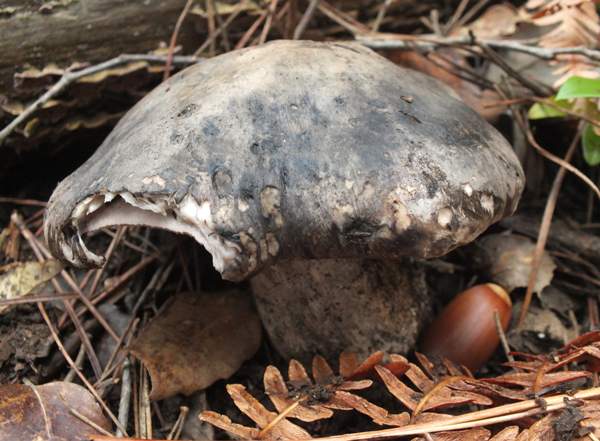
The Black Falsebolete is a very rare woodland mushroom; it is mycorrhizal with pine trees and usually occurs solitarily or in very small groups. (I have only ever seen singletons.)
Despite looking like a bolete, this dowdy but chunky fungus is not closely related to Boletus, Suillus and the various other bolete genera, and its irregularly globose spores are quite different from the generally fusiform spores of true boletes. It does, however, have a pored fertile surface unlike other members of the order Thelephorales.
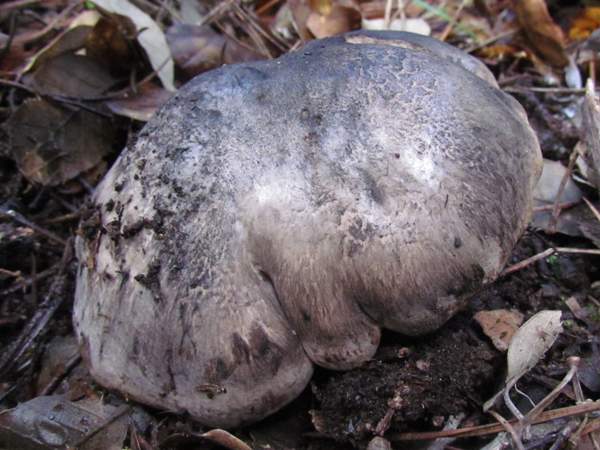
Distribution
Rarely if ever found in Britain except in Scotland, where the Black Falsebolete is very localised, this species is recorded from many other parts of Europe, stretching from Scandinavia down to the Iberian Peninsula, as well as parts of North America. Currently (2017) all official records for this species on the Fungal Records Database of Britain and Ireland (FRDBI) are from Scotland.
Taxonomic history
This species was described scientifically from Scotland in 2006 by British mycologists Roy Watling and J. Milne. Prior to this date, the few collections from Britain were recorded as Boletopsis leucomelaena but have since been reassigned.
Etymology
Boletopsis, the generic name, means resembling Boletus fungi. The specific epithet perplexa means obscure or confused.
Identification Guide
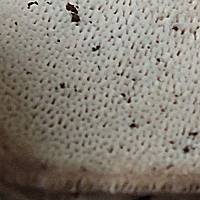 |
Cap
The domed caps range from 4 to 10cm across when fully developed, sometimes round but often irregularly oval and often with wavy inrolled margins, sometimes splitting. The smooth or slightly radially fibrous cap surface is dirty grey to black, often clouded and tinged with pink. The whitish cap flesh is firm and rather fibrous.
Tubes and Pores
The tubes are surprisingly short - 0.25 to 1mm deep (shortest near to the cap margin) - and the angular pores are less than 1mm in diameter. |
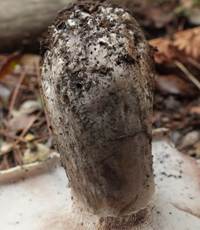 |
Stem
The stem of the Black Falsebolete fungus is 3 or 8cm and 1 to 2cm in diameter; usually tapering downwards from the cap to a rounded base. Its colour is as the cap or a little paler, often with orange fibres evident near the base. |
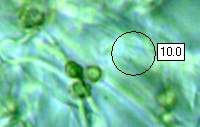 |
Spores
Irregularly subspherical, 4-6 x 3.5-4µm; ornamented with warts.
Spore print
White |
Odour/taste |
Odour indistinct; taste sometimes bitter. |
Habitat & Ecological role |
Mycorrhizal, on soil in mixed woodland; nearly always with pines (Pinus spp). |
Season |
Late summer and autumn in Britain. |
Similar species |
This is the only Boletopsis species known with certainty to occur in Britain. Boletopsis grisea, recorded in some European countries as well as North America, is very similar but has smaller pores and larger spores. Another non-British species, Boletopsis leucomelaena, is very similar and can only be distinguished from B. grisea and B. perplexa by careful examination of hyphal structures. |
Culinary Notes
This very rare species should not be collected unless under special permit and when essential for scientific study.
Reference Sources
Fascinated by Fungi, 2nd Edition, Pat O'Reilly 2016, reprinted by Coch-y-bonddu Books in 2022.
Dictionary of the Fungi; Paul M. Kirk, Paul F. Cannon, David W. Minter and J. A. Stalpers; CABI, 2008
Taxonomic history and synonym information on these pages is drawn from many sources but in particular from the British Mycological Society's GB Checklist of Fungi.
Top of page...
Fascinated by Fungi. Back by popular demand, Pat O'Reilly's best-selling 450-page hardback book is available now. The latest second edition was republished with a sparkling new cover design in September 2022 by Coch-y-Bonddu Books. Full details and copies are available from the publisher's online bookshop...